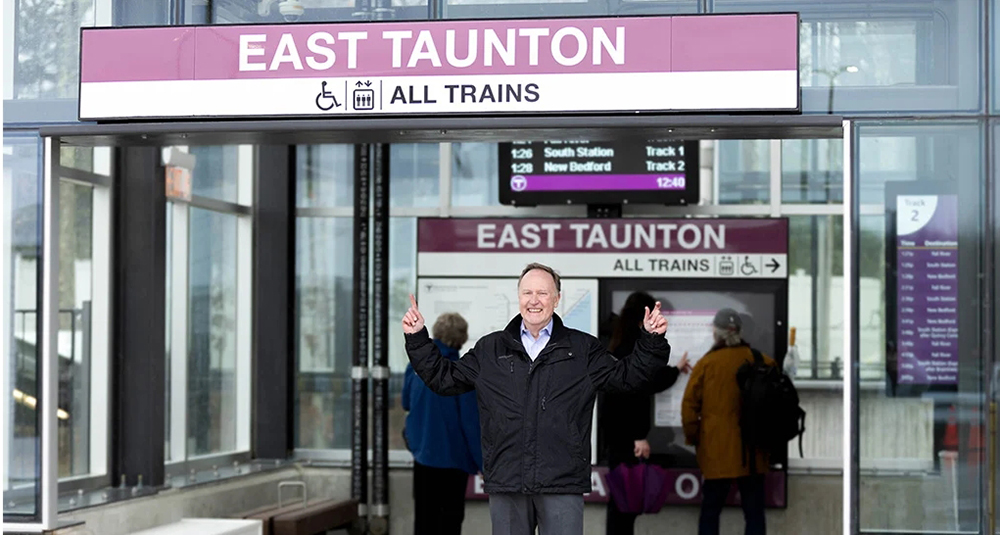The Rhode Island office market — a safe haven investment during downturns? - by Matt Fair

Nearing 20 years in the business, I’m amazed at how much has changed in the Rhode Island commercial real estate market, but more intriguing may be how much has stayed the same. From the great financial crisis of 2008 to the more recent pandemic-era uncertainty, we’ve seen no shortage of market volatility, but one thing remains constant, we have never over-built the commercial market.
Some would say it’s good news/bad news as our lack of construction has largely been a function of limited demand, but none the less, we have not seen any significant office construction booms over the past 40+ years which has made for a surprisingly stable commercial real estate market over an incredibly long period of time. Vacancies generally vary between 8% to 14% while rental rates have remained stable, even in the worst of times.
Like every downturn, the fear of the unknown or that “this time it will be different” creeps in to market sentiment, but reading the tea leaves and based on recent deals and requirements in the market, we’re optimistic. In the past 12 months there have been numerous examples of shadow sublease vacancies being absorbed by new direct deals before those leases have matured, and our vacancy rate remains near 12% overall. If you’re a tenant looking for between 5,000 to 15,000 s/f in class A or B locations, and depending on geography targets, you’ll likely only have a handful of real options to consider, even less the larger your requirement.
Some of the most acute supply constraining factors have been conversions and user acquisitions. In Providence in particular, we’ve seen an incredible appetite from our local colleges, universities, and hospitals to acquire office buildings for their own needs. Whether core to their mission or for additional support needs, this trend shows no signs of stopping. Brown University, Rhode Island School of Design, Johnson & Wales and Lifespan are at the top of the list of the key players in Providence, but there are many others including Bryant, and Roger Williams University who have been active in the suburbs.
Additionally, millions of s/f of office and commercial space has been converted to residential use over the past 20 years. The residential conversion boom, buoyed by a host of state incentives that have plugged capital gaps to make projects viable, has boosted our downtown Providence population by over 300% in the past 10 years. This growth in beds has further fueled our vibrant arts, culture and dining scene in the capital city. Since 2020 Rhode Island has gained high-quality population and top talent from our neighbors in New England and across the country. Brought here on a search for a better quality of life, this trend looks to continue as the “word is out”. Providence and the coastal areas of the state including Newport and South County have been the main targets of this transplant migration trend that continues to pick up steam.
In the suburban markets, medical office conversions have taken countless properties off the traditional office market. Significant sized medical conversion projects totaling nearly a million s/f have occurred as both full building repositions and on a suite-by-suite basis. This trend has been demographic driven given the baby boomer phenomenon but also from a consolidation trend amongst the major hospitals and provider conglomerates who need large blocks of space to merge practices and create efficient; large-scale; multi-specialty; community medical anchors in the key suburban regions of our market. With medical office buildings (MOB) becoming one of the most sought-after asset classes for commercial real estate investors on a national level, there have been a number of notable acquisitions from a “who’s-who” of large national institutional investors over the past two to three years. Clinical ambulatory demand is forecast to continue for the foreseeable future.
Healthcare and education is no doubt one of the main drivers in our market, with Brown University’s medical school continuing to grow and collaborate with researchers from our healthcare institutions, the funnel of National Institute of Health funding and nascent life sciences industry is set to propel Rhode Island to the forefront of innovation and investment in the years that come.
So…has Rhode Island become a safe haven market for commercial real estate investors? Based on past fundamentals with decades of low volatility combined with current projections….I think the answer is clearly “YES”.
Matt Fair is a partner with Hayes & Sherry, a Cushman & Wakefield Alliance Member, Providence, R.I.
Check out the New England Real Estate Journal's 2025 Fall Preview Spotlight
Explore our Fall Preview Spotlight, featuring exclusive Q&As with leading commercial real estate professionals and in-depth byline articles on today’s most relevant market topics. Gain insight into the trends, challenges, and opportunities shaping New England’s commercial real estate landscape this fall.


How long should I hold a property for it to qualify as an investment property in connection with a 1031 tax-deferred exchange? - by Brendan Greene and Mark McCue

30 years on South Coast Rail: A journey to connect Southeastern Mass. with commuter rail - by Rick Carey

Shallow-bay wins on 495/128: A renewal-driven market with a thin pipeline - by Nate Nickerson


.png)








